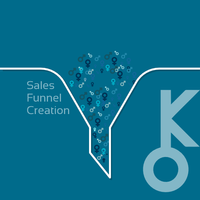Measuring Sales Funnel Performance
Sales funnel performance measurement is a crucial aspect of any business operation. It provides valuable insights into the effectiveness and efficiency of your sales process, allowing you to make data-driven decisions and improve your overall sales strategies.
Why measure sales funnel performance?
Measuring sales funnel performance helps businesses identify potential bottlenecks, areas for improvement, and opportunities for optimization. By analyzing key metrics at each stage of the sales process, you can gain a better understanding of how prospects move through the funnel and where they may be dropping off.
Moreover, tracking these metrics enables you to set benchmarks and monitor progress towards your goals. Whether it's increasing conversion rates or shortening the average sales cycle length, having measurable targets allows you to focus on continuous improvement.
Key metrics for measuring sales funnel performance
Lead generation: Start by tracking the number of leads generated over a specific period. This metric helps assess the efficiency of your marketing efforts in attracting potential customers.
Lead-to-opportunity conversion rate: Calculate how many leads turn into qualified opportunities. This ratio indicates how well your lead nurturing process is working.
Opportunity-to-deal conversion rate: Measure how many opportunities successfully convert into closed deals. This metric shows the effectiveness of your sales team in moving prospects further down the pipeline.
Average deal size: Determine the average value of each deal closed within a given time frame. Understanding this metric helps evaluate both individual deals and overall revenue generation.
Sales cycle length: Track how long it takes from initial contact to closing a deal with each customer or opportunity. Analyzing this metric can help identify potential obstacles that prolong the buying process.
Churn rate: Monitor customer churn or attrition from your existing client base during a particular time period as it directly impacts revenue growth.
Tools for measuring sales funnel performance
To accurately measure sales funnel performance, businesses utilize various tools and software. Here are a few commonly used options:
Customer Relationship Management (CRM) Systems: CRM systems like Salesforce, HubSpot, or Zoho provide features to track leads, opportunities, deals, and customer interactions throughout the sales process.
Google Analytics: Google Analytics is a powerful free tool that can help you understand how users interact with your website/pages, including the conversion rates at different stages of the funnel.
Marketing Automation Platforms: Tools such as Marketo or Mailchimp enable tracking and measuring marketing campaigns' effectiveness and their impact on lead generation.
Sales Funnel Analytics Software: Certain software solutions specifically focus on analyzing sales funnels, offering in-depth insights into conversion rates, drop-off points, and overall funnel performance.
Remember that choosing the right combination of tools depends on your business needs and size. Implementing these tools allows you to collect data effectively for analysis purposes.
Strategies for improving sales funnel performance
After gaining a comprehensive view of your sales funnel's performance through metrics tracking and analysis, it's important to implement strategies for improvement:
Streamline Lead Nurturing Processes: Optimize lead nurturing by creating personalized content tailored to specific buyer personas at each stage of the funnel.
Identify Bottlenecks: Analyze each stage of the sales process to identify bottlenecks where prospects may be dropping off more frequently than expected.
Enhance Sales-Ready Messaging: Ensure that your messaging aligns with prospects' pain points and addresses their objections during later stages of the buying journey.
Continuously Train Your Sales Team: Invest in regular training sessions to equip your sales team with effective techniques for handling objections and winning deals.
Leverage Data Insights for Optimization: Regularly analyze collected data to spot trends or areas requiring attention; then adjust your strategies accordingly.
Remember, measuring sales funnel performance is an ongoing process. Regularly reviewing data and implementing improvement strategies will help you maximize sales opportunities, increase revenue, and inspire long-term business growth.
















